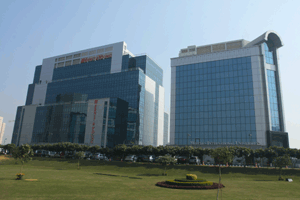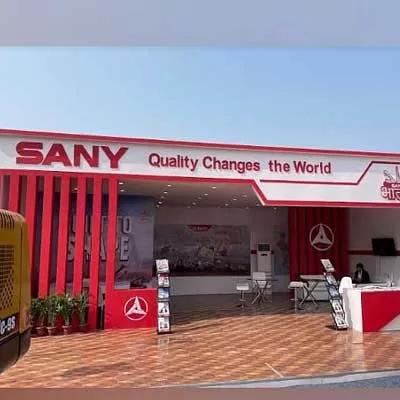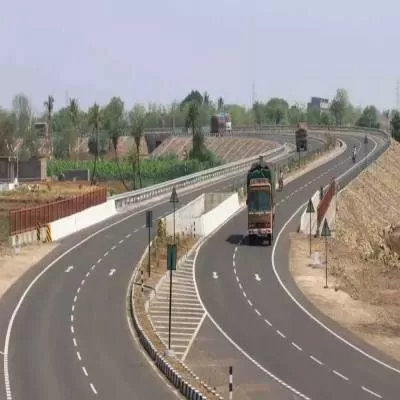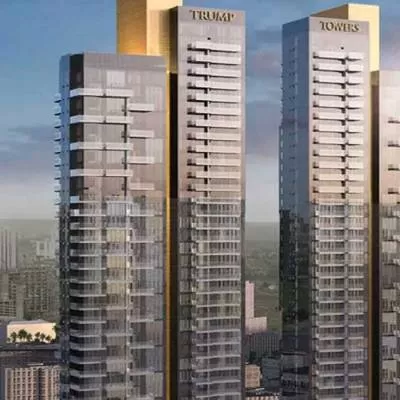- Home
- Real Estate
- Where all the action lies

Where all the action lies
In the Indian commercial landscape, all roads lead to a few top Indian cities. According to Viral Desai, Director, Occupier Solutions Group, Knight Frank India, "Bengaluru turned out to be the best performing city with nearly 11 million sq ft of space transacted last year. Mumbai and the NCR region held the second slot with 7 million sq ft each."
Cut to 2014. Figures from CBRE show that Delhi NCR, Bengaluru and Chennai represented about 70 per cent of the 6.3 million sq ft of office space transacted across leading cities during Q1 2014. At that level, demand was down about 5 per cent from last year.
So who is buying all this office space? "Currently, the IT/ITeS sector absorbs 60 per cent of the total commercial property in the pan-India market. Banks, financial institutions, insurance companies, manufacturing and pharmaceutical companies make up the remaining share of the pie," clarifies Desai.
Leading cities dominate the supply side of the equation as well. Bengaluru, Delhi NCR and Mumbai, in that order, contributed to more than 80 per cent of the total office space addition in Q1 2014. About 6.6 million sq ft of fresh office space was completed in Q1 2014, vis-a-vis about 10 million sq ft in Q1 2013.
Location, location, location
Where will the most demand for office space lie in the near future? "Demand will be concentrated mostly in the peripheral micro-markets of leading cities, owing to abundant availability of cost-effective quality space options," says Rajat Gupta, Executive Director, Transaction Management Group, CBRE India.
Within these biggest markets, the brightest opportunities lie in areas in close proximity to existing and upcoming transportation infrastructure. Connectivity is a key realty demand driver. "Public transport infrastructure plays a major role in enhancing the appeal of commercial property, more so developments in new locations," explains Rohit Gera, Managing Director, Gera Developments. "A pool of talent should exist in the vicinity of the proposed project, else public transport to ensure that it can easily be sourced from nearby areas."
True. Brigade Group developed Brigade Software Park in 1998 in Banashankari, the area's first such project, after concluding that most people working in the software industry hail from south Bengaluru. "That set the ball rolling for a lot of commercial development towards south Bengaluru," observes Jesu Dominic, DGM, Commercial, Brigade Group.
According to Ramesh Nair, COO-Business, JLL India, "Independent analyses of pricing reveal that proximity to a metro station can single handedly account for a 22 per cent variation in land values, the other factors being location, distance from the central point and income groups. For instance, in Mumbai, the Wadala-Chembur Monorail had pumped up property prices in Chembur and Wadala by over 100 per cent in four to five years. The Santacruz-Chembur Link Road spurred the Chembur micro-market as the Jogeshwari-Vikhroli Link Road stoked realty prices in surrounding areas. The eastern suburbs and northern suburban business district micro-markets, which will benefit from metro connectivity, have already seen price rises of 400 per cent over the past eight years, and this trend is set to continue with the launch of the Versova-Andheri-Ghatkopar corridor of the Mumbai Metro."
Commercial real estate in Bengaluru is following the same pattern. Bengaluru International Airport has spurred development towards the city's northern precincts, as has the widening of Bellary Road, the expressway connecting the city to the airport as well as the elevated highway. And in Delhi, developer Alpha G Corp is exploring upcoming commercial development zones along the Golf Course Extension road, the Northern Peripheral Road (Dwarka Expressway) and Sohna Road in Gurgaon. "The sale-ability of commercial projects depends chiefly on the location, the æmix' of the offering and the quality of infrastructure," says Mukul Kumar, Executive Director, Alpha G Corp.
He also believes "associations with prominent architectural firms help create some initial traction and excitement towards the property".
Sale-able designs
Major industry players are getting reputed Indian and overseas architects on board to enhance the sale-ability of their commercial projects. Aditya Sikri, CEO-Propcare Mall Management & Commercial Leasing, Mantri Developers, elaborates upon the rationale behind not restricting oneself to design internally or to any one firm. "Clients are becoming more sophisticated and only architects with sufficient experience and skills can map the utilisation of large land parcels to meet a certain vision," he says. "It is why we have worked with all the top Indian architects and global architects like Gensler and BBGM for our premium office complexes."
"We brought HOK New York onboard as the master planners of the Brigade Gateway enclave and designers of its World Trade Centre to bring world-class standards to the country," says Dominic. "Clients got a 40,000-sq-ft uninterrupted floor plate, world-class office space with great amenities in a recognised business address, which is well connected to the airport and central business district."
Cost-cutting opens doors
Occupiers in cities continue to focus on optimal space utilisation and cost-saving strategies. Among these, renegotiation with one's existing landlord makes the most sense, given the higher cost of relocation. Albeit, Rajat expects no let up in the outflow of CBD-based businesses to less expensive offices in the suburban or peripheral areas such as Gurgaon, Noida, Old Mahabalipuram Road (Chennai), Sarjapur Outer Ring Road (Bengaluru), Navi Mumbai, etc. For companies with a fragmented portfolio, consolidating offices within one premise is also an option. This is most popular with businesses in their fourth to sixth year of occupation, as by then they have amortised their initial fit-out costs. Re-densification and re-modifying office spaces have also been explored as space standards today are less lavish than a decade ago; Rajat says this route can help save 10-25 per cent of space.
To cater to all ends of the market and buyers' need for efficient spaces; developers are becoming increasingly responsive to demand for varying sizes of offices. "They are reinventing their commercial projects to offer smaller units of 750-1,000 sq ft in areas with high demand for smaller units," says Anuj Puri, Chairman & Country Head, JLL India. "New categories of buyers demanding smaller units include professionals, senior executives setting up start-ups and HNIs investing in commercial property. In IT-centric locations, developers may choose to offer conventional large floor plates to accommodate sizeable work teams, but additionally engage a professional agency to strategise workspaces for optimum efficiency."
"Companies looking at serious cost-cutting are opting for pay-as-you-go serviced office spaces," observes Puri. Shared and centrally managed IT infrastructure, secretarial services and conference facilities significantly reduce costs. Shared commercial spaces are flexible, and suit start-ups, companies exploring cautious expansion into new territories and companies needing off-site office spaces. But services office spaces do not offer scope for customisation and visible company branding. According to Puri, "Services offices are most active across the Tier-I and Tier-II cities. DBS Business Centre and Apeejay Business Centre are the oldest players in the segment. Other prominent names include Regus, The Executive Centre, ServeCorp, Stylus, New Bridge Centre and Vatika Business Centre."
Beyond Tier-I cities
What has happened to the real-estate growth story in emerging business destinations such as Ahmedabad, Bhubaneswar, Chandigarh, Coimbatore, Jaipur, Kochi, Indore, Nagpur, Vadodara and Visakhapatnam? It is yet to take off, no thanks to the continuing bright realty prospects in Tier-I cities. Desai believes sectors like telecom and BFSI have limited exposure in Tier-II and III cities, but even this is primarily for backend operations. "Demand in those locations has not really picked up as expected," he points out.
Growth in emerging markets will depend on local policies and infrastructure development. Brigade Group is co-developing Brigade Technopolis, an SEZ project, on a 5-acre land parcel in Kochi with Kochi Infopark. It is designed to meet the growing requirements of expanding IT/ITeS companies. According to Dominic, "Developers must consider all relevant parameters vital for business. In Kochi, we see the best digital infrastructure, unique Mediterranean climate, and unfulfilled demand for commercial space to the tune of over 14 million sq ft by 2020."
Gera Developments is an active player in the Goa office or commercial real-estate market, where Gera says the recent lifting of the mining ban is turning out to be a big stimulator, as is the state's evergreen tourism industry.
| Micro-market | Larger market | Demand drivers | Size of top tier of micro-market |
|---|---|---|---|
| Noida & Greater Noida (especially Noida–Greater Noida Expressway and beyond on the Yamuna Expressway) | National Capital Region | • IT hub • Cost-effective office destination alternative to Gurgaon especially for campus-style office spaces • Good connectivity • Established social infrastructure | About 23% of the Grade A office stock in Delhi NCR. |
| Thane | Mumbai Metropolitan Region | • IT hub • Improved connectivity with western and eastern suburbs and Navi Mumbai • Established social infrastructure | About 4.5 million sq ft of Grade A office space, which constitutes about 5.3% of the total stock of Mumbai. |
| Navi Mumbai | Mumbai Metropolitan Region | • IT/BFSI hub • Good connectivity to Mumbai and Pune • Established social infrastructure | Grade A stock is about 13 million sq ft, which is about 15% of the total office stock in Mumbai. |
| Whitefield | Bengaluru | • IT hub • Connectivity with the prime city • Well-established social infrastructure | 21.6 million sq ft, which is about 32% of the total Grade A offi ce stock of Bengaluru city. |
| Southern Suburbs (especially corridors along the Great Southern Trunk Road, Old Mahabalipuram Road and East Coast Road) | Chennai | • IT hub/SEZ • Affordable price points | NA |
| Viman Nagar and Nagar Road | Pune | • IT hub • Good connectivity • Established social infrastructure | About 18.5% of the total stock of Pune, ie, about 6.5 million sq ft of operational Grade A office space. |
| Gachibowli | Hyderabad | • IT/IT SEZ hub | About 20% of the Grade |
| Rajarhat | Kolkata | • IT hub • Affordable price points • Good road connectivity • Proximity to international airport | Almost 40% of the total office stock of Kolkata, ie, about 6.4 million sq ft of Grade A office space. |
Returns on investments are lower in Tier-II cities, and this also holds back the real-estate sector there despite the opportunities. According to Harindra Nagar, Managing Director, Paras Buildtech, "ROI in real estate in metros is likely to exhibit a gradual upward movement to between 15 per cent and 25 per cent in the next year, whereas the ROI in Tier-II cities could be between 10 and 15 per cent. But the new Government's 'Rurban'-centric development model could fundamentally change the debate on metro vs Tier-II developments as the lines could be blurred."
"Overall economic growth and demand-supply position apart, the potential return in commercial office development in Tier-II cities largely depends on the respective city's exposure to the IT and ITeS segments," opines Sushil Mohta, Managing Director, Merlin Group.
Based on feedback from potential lessees in emerging cities, Rajat believes it would help if major developers apply their experience to develop office space complying with employee, health and safety (EHS) norms applicable to companies in those markets, saying, "Such spaces are few in number, which does not spur demand. On the contrary, the big players stay away because of low demand. It is a vicious cycle." Until this cycle is broken, all roads will continue to lead to a few top cities.
To lease or buy?
According to Rajat Gupta, Executive Director, Transaction Management Group, CBRE India, "The Indian commercial realty space is skewed towards leasing. Typically, while Indian businesses are highly predisposed to buy space, multinationals prefer to lease. Among the multinationals, the few that do end up purchasing real estate prefer to do so in southern India rather than in the north or west." With the economic environment beginning to revive, many more companies are thinking of buying but the existing trend of leasing space is likely to prevail. Leasing is also the preferred alternative from the perspective of larger developers because it yields greater return over the long term. Further, it gives developers the option of mortgaging property for funds, which are scarce in the current scenario, or even creating a portfolio to be put in a real-estate investment trust (REIT).
To share your views on the commercial realty space, write in at feedback@ASAPPmedia.com
New micro-markets will keep India's leading centres of commerce at the top of the commercial realty charts. In the Indian commercial landscape, all roads lead to a few top Indian cities. According to Viral Desai, Director, Occupier Solutions Group, Knight Frank India, Bengaluru turned out to be the best performing city with nearly 11 million sq ft of space transacted last year. Mumbai and the NCR region held the second slot with 7 million sq ft each. Cut to 2014. Figures from CBRE show that Delhi NCR, Bengaluru and Chennai represented about 70 per cent of the 6.3 million sq ft of office space transacted across leading cities during Q1 2014. At that level, demand was down about 5 per cent from last year. So who is buying all this office space? Currently, the IT/ITeS sector absorbs 60 per cent of the total commercial property in the pan-India market. Banks, financial institutions, insurance companies, manufacturing and pharmaceutical companies make up the remaining share of the pie, clarifies Desai. Leading cities dominate the supply side of the equation as well. Bengaluru, Delhi NCR and Mumbai, in that order, contributed to more than 80 per cent of the total office space addition in Q1 2014. About 6.6 million sq ft of fresh office space was completed in Q1 2014, vis-a-vis about 10 million sq ft in Q1 2013. Location, location, location Where will the most demand for office space lie in the near future? Demand will be concentrated mostly in the peripheral micro-markets of leading cities, owing to abundant availability of cost-effective quality space options, says Rajat Gupta, Executive Director, Transaction Management Group, CBRE India. Within these biggest markets, the brightest opportunities lie in areas in close proximity to existing and upcoming transportation infrastructure. Connectivity is a key realty demand driver. Public transport infrastructure plays a major role in enhancing the appeal of commercial property, more so developments in new locations, explains Rohit Gera, Managing Director, Gera Developments. A pool of talent should exist in the vicinity of the proposed project, else public transport to ensure that it can easily be sourced from nearby areas. True. Brigade Group developed Brigade Software Park in 1998 in Banashankari, the area's first such project, after concluding that most people working in the software industry hail from south Bengaluru. That set the ball rolling for a lot of commercial development towards south Bengaluru, observes Jesu Dominic, DGM, Commercial, Brigade Group. According to Ramesh Nair, COO-Business, JLL India, Independent analyses of pricing reveal that proximity to a metro station can single handedly account for a 22 per cent variation in land values, the other factors being location, distance from the central point and income groups. For instance, in Mumbai, the Wadala-Chembur Monorail had pumped up property prices in Chembur and Wadala by over 100 per cent in four to five years. The Santacruz-Chembur Link Road spurred the Chembur micro-market as the Jogeshwari-Vikhroli Link Road stoked realty prices in surrounding areas. The eastern suburbs and northern suburban business district micro-markets, which will benefit from metro connectivity, have already seen price rises of 400 per cent over the past eight years, and this trend is set to continue with the launch of the Versova-Andheri-Ghatkopar corridor of the Mumbai Metro. Commercial real estate in Bengaluru is following the same pattern. Bengaluru International Airport has spurred development towards the city's northern precincts, as has the widening of Bellary Road, the expressway connecting the city to the airport as well as the elevated highway. And in Delhi, developer Alpha G Corp is exploring upcoming commercial development zones along the Golf Course Extension road, the Northern Peripheral Road (Dwarka Expressway) and Sohna Road in Gurgaon. The sale-ability of commercial projects depends chiefly on the location, the æmix' of the offering and the quality of infrastructure, says Mukul Kumar, Executive Director, Alpha G Corp. He also believes associations with prominent architectural firms help create some initial traction and excitement towards the property. Sale-able designs Major industry players are getting reputed Indian and overseas architects on board to enhance the sale-ability of their commercial projects. Aditya Sikri, CEO-Propcare Mall Management & Commercial Leasing, Mantri Developers, elaborates upon the rationale behind not restricting oneself to design internally or to any one firm. Clients are becoming more sophisticated and only architects with sufficient experience and skills can map the utilisation of large land parcels to meet a certain vision, he says. It is why we have worked with all the top Indian architects and global architects like Gensler and BBGM for our premium office complexes. We brought HOK New York onboard as the master planners of the Brigade Gateway enclave and designers of its World Trade Centre to bring world-class standards to the country, says Dominic. Clients got a 40,000-sq-ft uninterrupted floor plate, world-class office space with great amenities in a recognised business address, which is well connected to the airport and central business district. Cost-cutting opens doors Occupiers in cities continue to focus on optimal space utilisation and cost-saving strategies. Among these, renegotiation with one's existing landlord makes the most sense, given the higher cost of relocation. Albeit, Rajat expects no let up in the outflow of CBD-based businesses to less expensive offices in the suburban or peripheral areas such as Gurgaon, Noida, Old Mahabalipuram Road (Chennai), Sarjapur Outer Ring Road (Bengaluru), Navi Mumbai, etc. For companies with a fragmented portfolio, consolidating offices within one premise is also an option. This is most popular with businesses in their fourth to sixth year of occupation, as by then they have amortised their initial fit-out costs. Re-densification and re-modifying office spaces have also been explored as space standards today are less lavish than a decade ago; Rajat says this route can help save 10-25 per cent of space. To cater to all ends of the market and buyers' need for efficient spaces; developers are becoming increasingly responsive to demand for varying sizes of offices. They are reinventing their commercial projects to offer smaller units of 750-1,000 sq ft in areas with high demand for smaller units, says Anuj Puri, Chairman & Country Head, JLL India. New categories of buyers demanding smaller units include professionals, senior executives setting up start-ups and HNIs investing in commercial property. In IT-centric locations, developers may choose to offer conventional large floor plates to accommodate sizeable work teams, but additionally engage a professional agency to strategise workspaces for optimum efficiency. Companies looking at serious cost-cutting are opting for pay-as-you-go serviced office spaces, observes Puri. Shared and centrally managed IT infrastructure, secretarial services and conference facilities significantly reduce costs. Shared commercial spaces are flexible, and suit start-ups, companies exploring cautious expansion into new territories and companies needing off-site office spaces. But services office spaces do not offer scope for customisation and visible company branding. According to Puri, Services offices are most active across the Tier-I and Tier-II cities. DBS Business Centre and Apeejay Business Centre are the oldest players in the segment. Other prominent names include Regus, The Executive Centre, ServeCorp, Stylus, New Bridge Centre and Vatika Business Centre. Beyond Tier-I cities What has happened to the real-estate growth story in emerging business destinations such as Ahmedabad, Bhubaneswar, Chandigarh, Coimbatore, Jaipur, Kochi, Indore, Nagpur, Vadodara and Visakhapatnam? It is yet to take off, no thanks to the continuing bright realty prospects in Tier-I cities. Desai believes sectors like telecom and BFSI have limited exposure in Tier-II and III cities, but even this is primarily for backend operations. Demand in those locations has not really picked up as expected, he points out. Growth in emerging markets will depend on local policies and infrastructure development. Brigade Group is co-developing Brigade Technopolis, an SEZ project, on a 5-acre land parcel in Kochi with Kochi Infopark. It is designed to meet the growing requirements of expanding IT/ITeS companies. According to Dominic, Developers must consider all relevant parameters vital for business. In Kochi, we see the best digital infrastructure, unique Mediterranean climate, and unfulfilled demand for commercial space to the tune of over 14 million sq ft by 2020. Gera Developments is an active player in the Goa office or commercial real-estate market, where Gera says the recent lifting of the mining ban is turning out to be a big stimulator, as is the state's evergreen tourism industry. Micro-market Larger market Demand drivers Size of top tier of micro-market Noida & Greater Noida (especially Noida–Greater Noida Expressway and beyond on the Yamuna Expressway) National Capital Region • IT hub • Cost-effective office destination alternative to Gurgaon especially for campus-style office spaces • Good connectivity • Established social infrastructure About 23% of the Grade A office stock in Delhi NCR. Thane Mumbai Metropolitan Region • IT hub • Improved connectivity with western and eastern suburbs and Navi Mumbai • Established social infrastructure About 4.5 million sq ft of Grade A office space, which constitutes about 5.3% of the total stock of Mumbai. Navi Mumbai Mumbai Metropolitan Region • IT/BFSI hub • Good connectivity to Mumbai and Pune • Established social infrastructure Grade A stock is about 13 million sq ft, which is about 15% of the total office stock in Mumbai. Whitefield Bengaluru • IT hub • Connectivity with the prime city • Well-established social infrastructure 21.6 million sq ft, which is about 32% of the total Grade A offi ce stock of Bengaluru city. Southern Suburbs (especially corridors along the Great Southern Trunk Road, Old Mahabalipuram Road and East Coast Road) Chennai • IT hub/SEZ • Affordable price points NA Viman Nagar and Nagar Road Pune • IT hub • Good connectivity • Established social infrastructure About 18.5% of the total stock of Pune, ie, about 6.5 million sq ft of operational Grade A office space. Gachibowli Hyderabad • IT/IT SEZ hub About 20% of the Grade A office stock of Hyderabad, ie, about 5 million sq ft of Grade A office space. Rajarhat Kolkata • IT hub • Affordable price points • Good road connectivity • Proximity to international airport Almost 40% of the total office stock of Kolkata, ie, about 6.4 million sq ft of Grade A office space. Returns on investments are lower in Tier-II cities, and this also holds back the real-estate sector there despite the opportunities. According to Harindra Nagar, Managing Director, Paras Buildtech, ROI in real estate in metros is likely to exhibit a gradual upward movement to between 15 per cent and 25 per cent in the next year, whereas the ROI in Tier-II cities could be between 10 and 15 per cent. But the new Government's 'Rurban'-centric development model could fundamentally change the debate on metro vs Tier-II developments as the lines could be blurred. Overall economic growth and demand-supply position apart, the potential return in commercial office development in Tier-II cities largely depends on the respective city's exposure to the IT and ITeS segments, opines Sushil Mohta, Managing Director, Merlin Group. Based on feedback from potential lessees in emerging cities, Rajat believes it would help if major developers apply their experience to develop office space complying with employee, health and safety (EHS) norms applicable to companies in those markets, saying, Such spaces are few in number, which does not spur demand. On the contrary, the big players stay away because of low demand. It is a vicious cycle. Until this cycle is broken, all roads will continue to lead to a few top cities. To lease or buy? According to Rajat Gupta, Executive Director, Transaction Management Group, CBRE India, The Indian commercial realty space is skewed towards leasing. Typically, while Indian businesses are highly predisposed to buy space, multinationals prefer to lease. Among the multinationals, the few that do end up purchasing real estate prefer to do so in southern India rather than in the north or west. With the economic environment beginning to revive, many more companies are thinking of buying but the existing trend of leasing space is likely to prevail. Leasing is also the preferred alternative from the perspective of larger developers because it yields greater return over the long term. Further, it gives developers the option of mortgaging property for funds, which are scarce in the current scenario, or even creating a portfolio to be put in a real-estate investment trust (REIT). To share your views on the commercial realty space, write in at feedback@ASAPPmedia.com
























